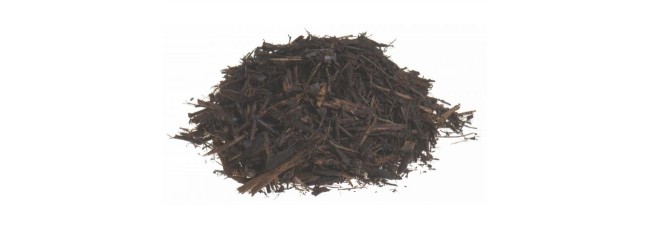Hedge Planting & Maintenance: A Complete Guide

Whether you want to create a formal boundary, enhance privacy or attract wildlife, hedge planting can completely transform your garden. But which type of hedge will work best for you and what preparation do you need to carry out? In this guide, we’ll walk you through the initial selection stage and provide expert hedge planting tips for the best chance of success. We’ll also touch on some essential hedge maintenance tips to factor in longer term. Let’s get started!
Choosing the right hedge for your garden
First of all, you’ll need to pick a suitable species of hedge. Think about its intended purpose, desired growth rate and required upkeep. This, alongside your garden’s soil type, should help narrow your search. Here’s a brief overview of your options and key things to consider:
Privacy & screening – evergreen hedges like Cherry Laurel (Prunus rotundifolia) and Portuguese Laurel (Prunus lusitanica) provide year-round coverage. Their density and fast growth ensures good levels of privacy and makes them ideal for lining boundaries. Cherry Laurel boasts large, glossy green leaves, small white flowers and black berries. Meanwhile, Portuguese Laurel is more compact with dark green leaves and red stems.
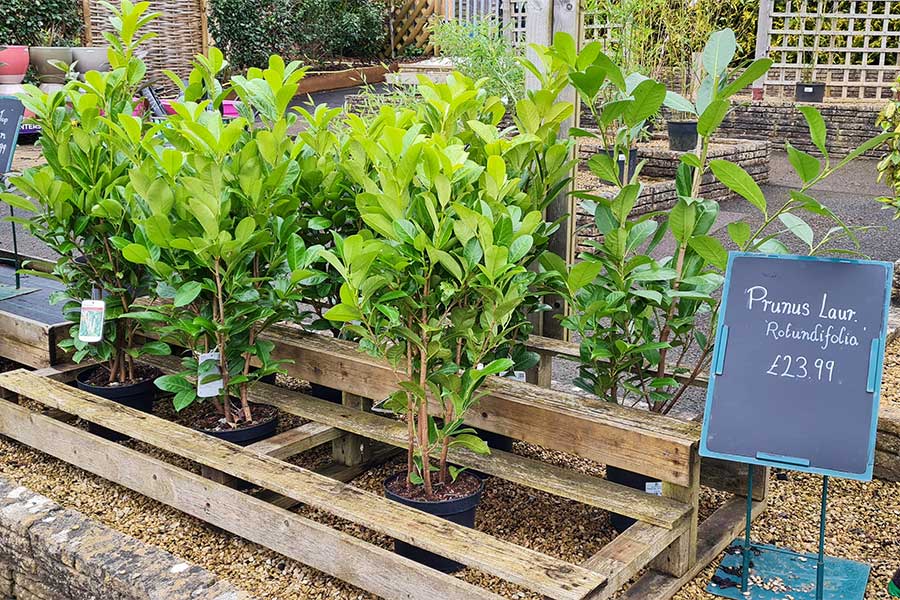
Formal & decorative – for neater, structured hedging, Privet (Ligustrum ovalifolium) with its small glossy green leaves and summer flowers is a classic choice. Or you might prefer slow-growing dark green Yew (Taxus baccata). This tolerates pruning well and can be shaped as desired. But it does need well-drained soil and partial shade.
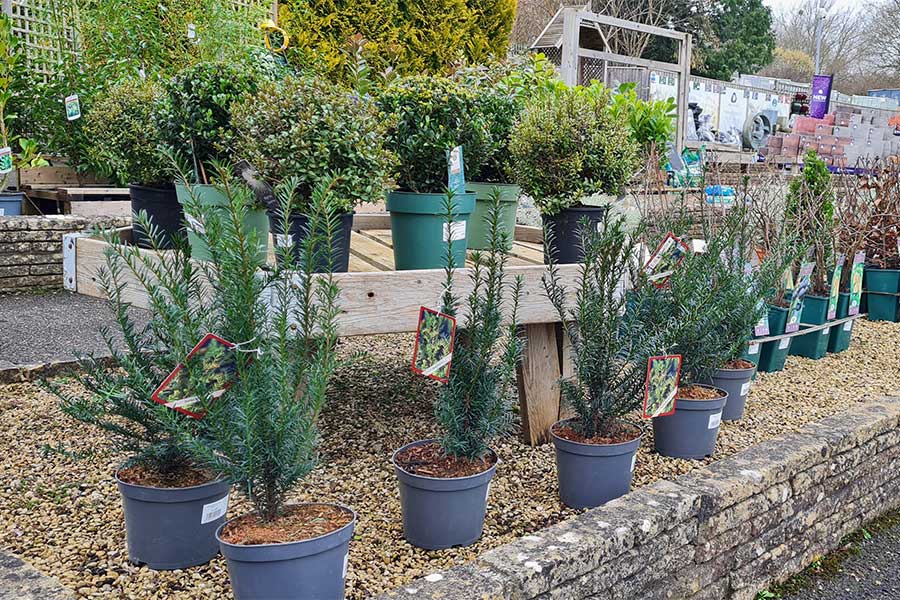
Alternatively, Hornbeam (Carpinus betulus) hedges are dense, hardy and work well in heavier clay soil. Its serrated leaves also turn a lovely gold-yellow colour in autumn.
Wildlife-friendly – to attract wildlife, stick to native hedges wherever possible and mix species for year-round food. Hawthorn (Crataegus monogyna) produces white flowers in spring and red berries in autumn. Its thorny branches also protect nesting birds.
Blackthorn (Prunus spinosa) is another good pick, with white blossoms and dark blue sloes that attract birds and pollinators. And Elaeagnus (Elaeagnus ebbingei) is a great source of nectar for honey bees during the autumn months when food is scarce.
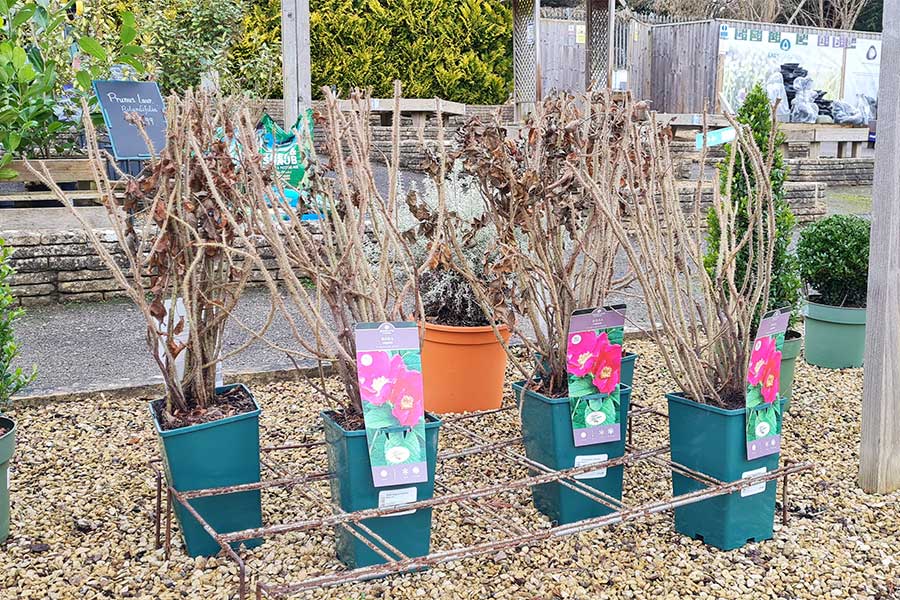
Or if you’d prefer something more fragrant, how about Ramanas Rose (Rosa rugosa) with large pink flowers and red rose hips?
Fast-growing – evergreen Elaeagnus establishes quickly and boasts silvery-green leaves and fragrant autumn flowers. As does semi-evergreen Privet (Ligustrum ovalifolium). Just bear in mind that whilst fast-growing hedges offer quick results, they do need more maintenance, including regular pruning.
For challenging conditions – versatile Dogwood (Cornus) thrives in poor soil and provides much-needed colour in winter due to its vivid red, yellow or orange stems. Otherwise, hardy Elaeagnus is highly wind resistant and ideal for coastal areas.
Evergreen vs deciduous: evergreens like Laurel and Yew provide coverage all year round. Deciduous hedges like Beech (Fagus sylvatica) and Hornbeam (Carpinus betulus), on the other hand, change seasonally with rich autumn colours.
The hedge planting process

When is the best time for hedge planting?
The best time for hedge planting is between late autumn and early spring when saplings are dormant. This allows the shrubs to establish their roots without the stress of active growth. For evergreen hedges, the ideal time for planting is early autumn. This gives them time to root before the cold weather sets in, ensuring strong growth in spring. Whilst deciduous hedges can be planted mid-autumn to late winter, provided the ground is not frozen or waterlogged.
How to plant a hedge step-by-step:
- Prepare the site – start by removing any weeds from the planting area, but avoid using chemicals that could harm your new shrubs. It’s important to check the soil’s condition before planting. The soil should be easy to work with a fork, not too wet or too dry, and free from debris.
If needed, you can dampen the soil slightly to improve its texture and add some compost to boost its nutrients. A good choice for this is Westland Tree & Shrub Planting Mix, which is peat-free and designed to promote healthy root development. This mix also releases nutrients slowly over 6 months to support long-term growth.
- Determine spacing & layout – once the site is ready, check the recommended spacing for your particular species of hedge. This will depend on how large the plants will grow when fully mature. However, as a general rule, if you're planting a single-row hedge, the shrubs should be spaced about 30cm apart in a straight line.
For thicker hedges, we’d recommend a staggered double row layout. To create this, plant your shrubs in a zig-zag pattern with five plants per metre, leaving at least 40cm between each one. It’s also a good idea to plant a tree every 6 metres to provide extra habitat, shade and wind protection.
Tip: if you’re installing a hedge around your property’s boundary, set it back by at least 90cm. This will allow room for growth and avoid overhang into neighbouring gardens.
- Dig the trench (or individual holes) - there are two main options when it comes to hedge planting: digging individual holes for each shrub or creating a larger full-length trench. If you choose to dig individual holes, each one should be roughly twice the depth and diameter of the root ball. Digging a larger trench requires more effort and in-filling, but is necessary for larger plants, as the roots need space to spread out.
Tip: working with soil that is sandy, clay-rich or in poor condition? Avoid adding organic matter directly to the bottom of the trench or hole, or your plants will sink. Add it later.
- Planting your new hedge – place each plant into the trench one by one, making sure the roots are spread out evenly. The point where the stem ends and the roots begin should be level with the surrounding soil. Alternatively, you can check how deep the shrub was planted in its original container and replicate that in the ground.
Once in position, backfill the trench or holes with soil or compost, gently firming it around the base of each plant. As you backfill, you can also incorporate some nutrient-rich manure or mushroom compost into the soil to give your new hedge an extra boost.
Finally, water the area thoroughly and apply a good layer of mulch around the base of each plant. This will help to retain moisture, deter pests and suppress weeds.
Hedge maintenance & care
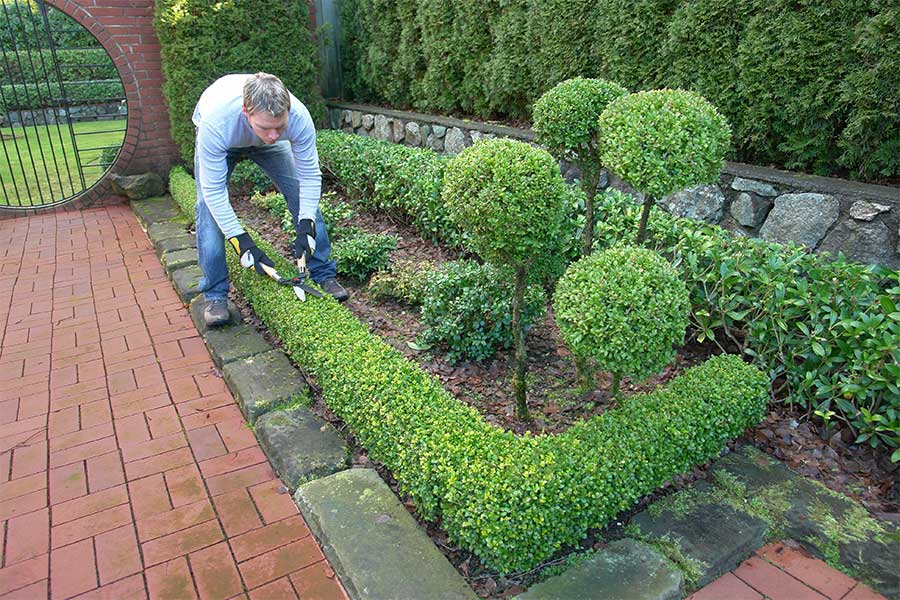
Proper hedge maintenance will help to ensure a healthy, dense and attractive hedge. The first two years are arguably the most important, when your new shrubs are still maturing. In the spring after planting, you should lightly prune your hedge above the buds, to around 60cm in height. This, along with removing any damaged branches, will encourage bushy growth and minimise gaps. You should also monitor the area around your hedge, making sure it is kept weed-free and moist in dry spells. Re-applying mulch each spring will also help deter pests.
Once established, you can carry out more regular pruning over the winter period or early spring. February is ideal, that way you won’t be cutting off food sources or interfering with nesting areas. Formal box hedging, Privet hedges and Yew species will need shaping 2-3 times a year. Whilst less structured varieties like Hawthorn and Blackthorn just need light pruning once or twice a year to keep them neat.
With that said, if possible, we’d suggest only trimming native hedges back every other year. Otherwise, you may stunt fruit growth and flowering. Or you could trim each side on alternate years to prevent habitat loss and keep wildlife in your garden. It’s entirely up to you!
Find the perfect hedging at Oxford Garden Centre
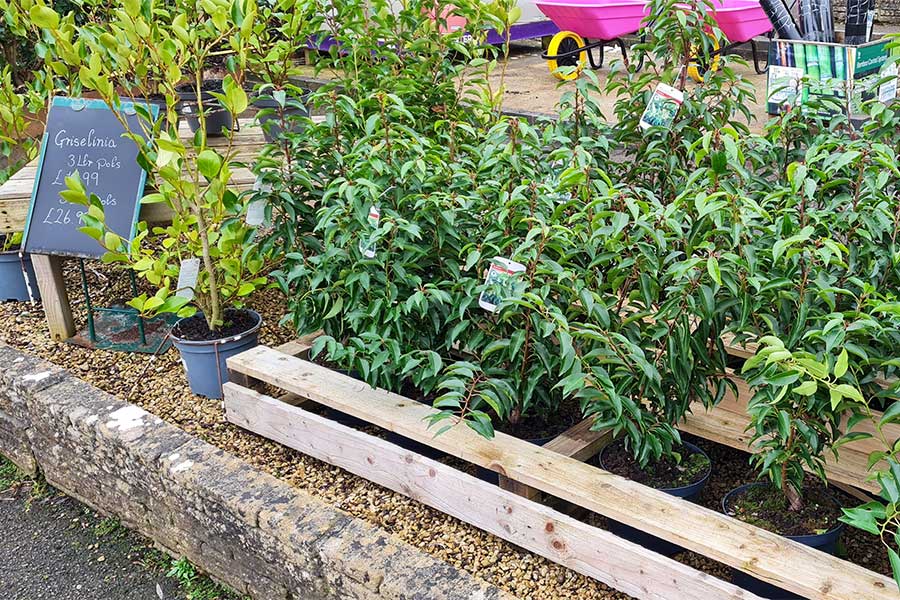
From young native varieties to larger, more established plants, we stock a range of hedging plants for every garden. Plus high-quality garden tools, peat-free composts, mulches and fertilisers, available online and in-store, to give your shrubs the best start.

Our newly stocked British hedging species, including Hornbeam, Hazel and Quickthorn, help to encourage wildlife and birds into your garden. Priced at just £18.99 for a 4-litre pot containing 5 plants, they’re also an affordable way to create an attractive natural boundary.
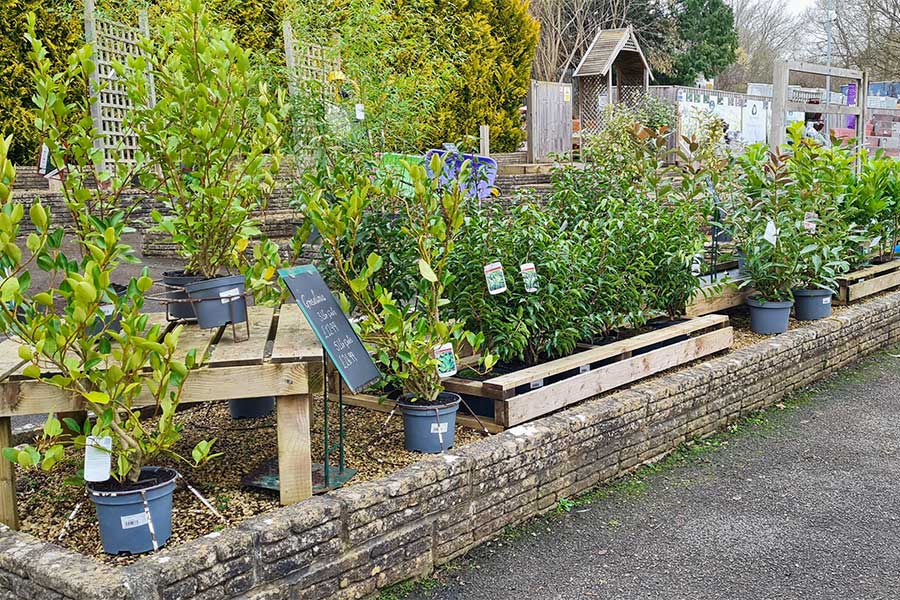
Additionally, we stock a number of non-native but equally effective hedging plants. Options include Cherry Laurel, Portuguese Laurel, Eleagnus and more. These are sold in larger 5-litre containers, with plants starting at around a metre in height, from £21.99. Or, for lower-level box hedges, Buxus and Yew are great choices, available in packs of 6 plants from £14.99.
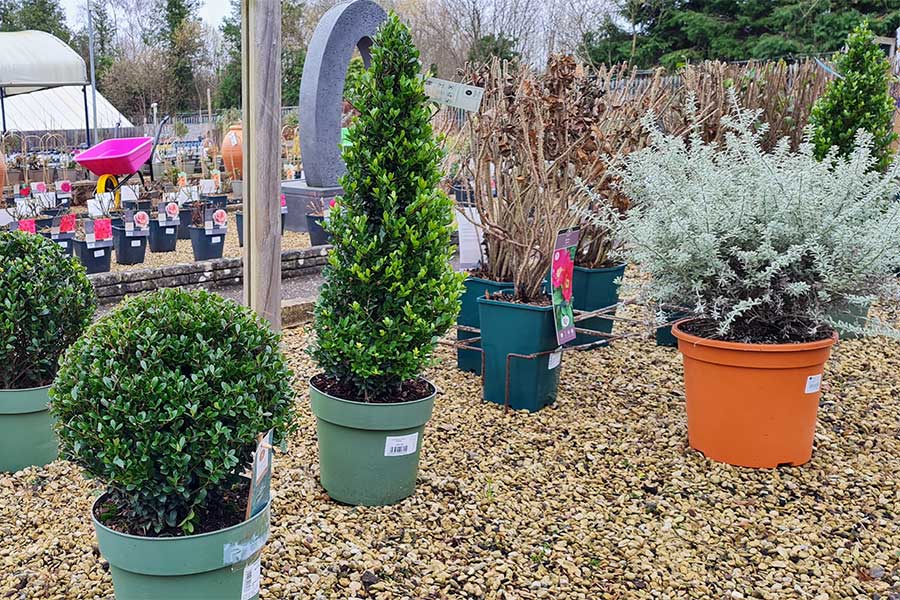
Visit Oxford Garden Centre to browse the full range now and get expert advice from our team.





